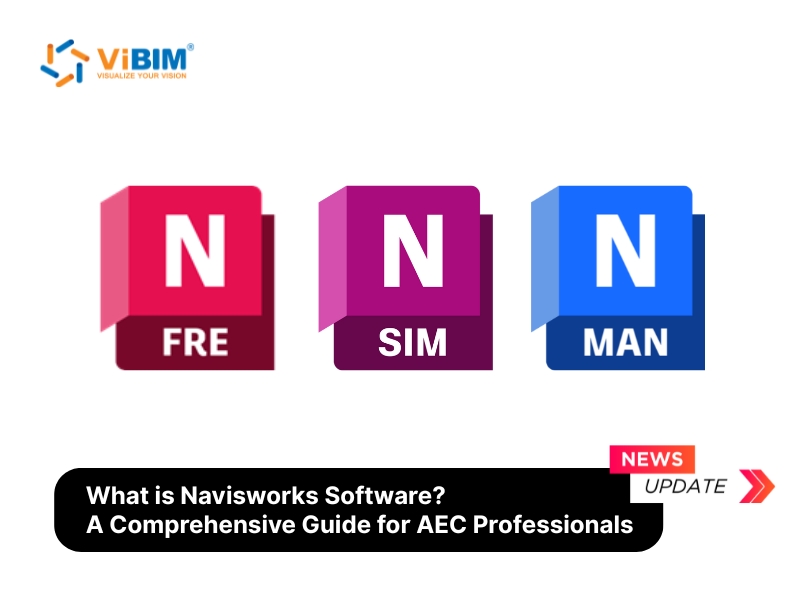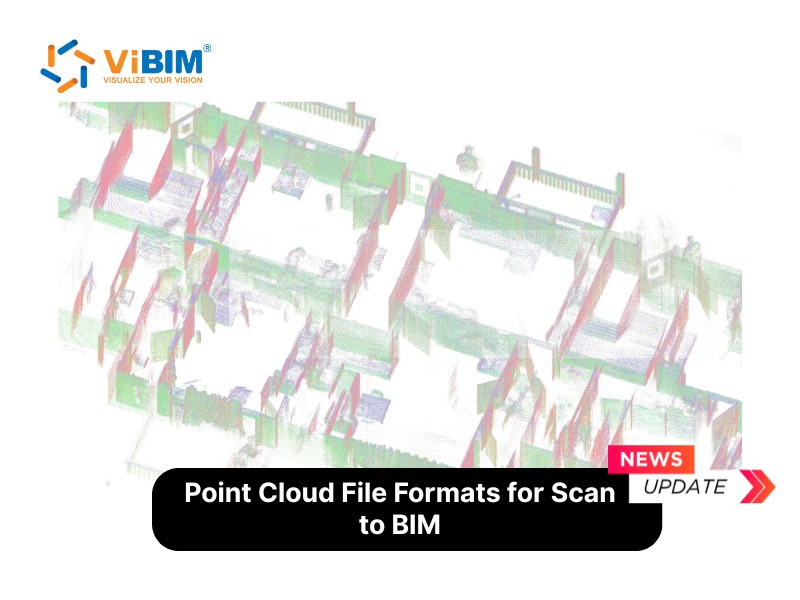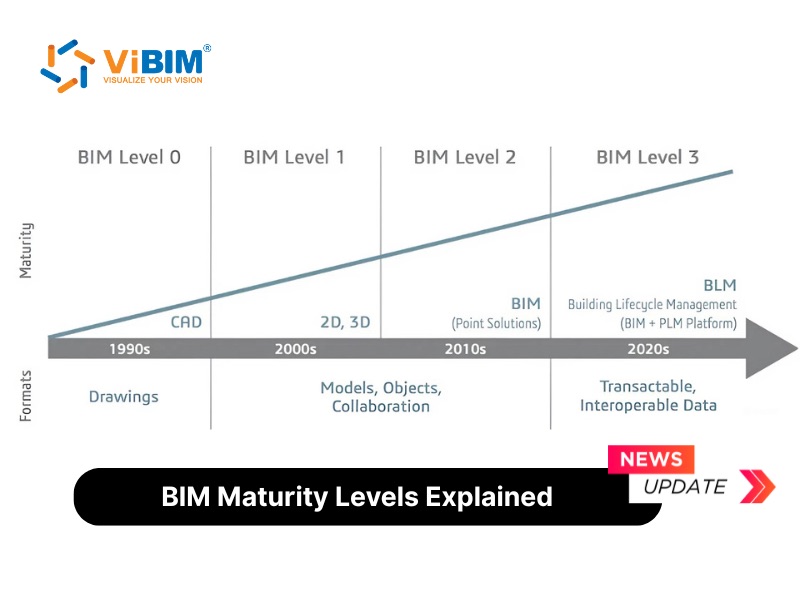Facility management (FM) encompasses a wide range of activities, including maintenance, space management, and asset tracking, all aimed at ensuring the building meets the needs of its occupants and owners. However, traditional facilities management approaches often face significant challenges including fragmented information, reliance on outdated 2D drawings, and difficulty accessing and visualizing critical building data, leading to inefficiencies, increased operating costs, and reduced ability to proactively manage building assets.
BIM is a powerful tool for facility management, allowing facility managers to access detailed data about building components, such as equipment specifications, maintenance schedules, and warranties, reducing reliance on scattered documentation. This article will explore the primary advantages of using BIM for facility management, details the step-by-step process for implementation, and clarifies the critical role of as-built data in achieving operational efficiency.

What is BIM for Facility Management?
BIM for Facility Management (FM) refers to the utilization of Building Information Modeling (BIM) to enhance the management, operation, and maintenance of built assets post-construction. It extends the value of BIM beyond the design and construction phases, enabling owners to receive a digital representation of a building asset that consolidates data from across its lifecycle. By integrating this data into a real-time digital replica, such as a digital twin, facility managers can optimize all elements of building operations.
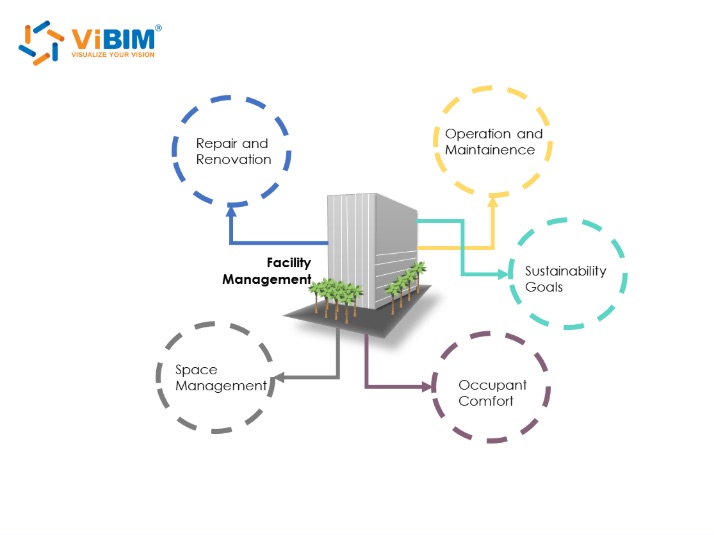
What are the Key Advantages of Using BIM for Facility Management?
There are 5 primary advantages of integrating BIM into facility management: improved spatial management, streamlined maintenance programs, enhanced energy efficiency and reduced operating costs, renovations and economical retrofits and optimized lifecycle management and investment decisions. Here are more detailed information:
Improved Space Management with BIM Data
Facility managers can leverage the detailed spatial information embedded within a BIM model to optimize a building’s layout, track space allocation, and plan for future needs more effectively.
The 3D visualization capabilities of BIM allow conduct spatial analyses, identify underutilized areas, and plan reconfigurations with greater accuracy, which is especially valuable for complex facilities like hospitals or corporate offices.
Furthermore, the ability to link space data with occupancy information and asset locations within the BIM model provides facility managers with a holistic view of their building’s resources, enabling them to make data-driven decisions to improve efficiency and user comfort.
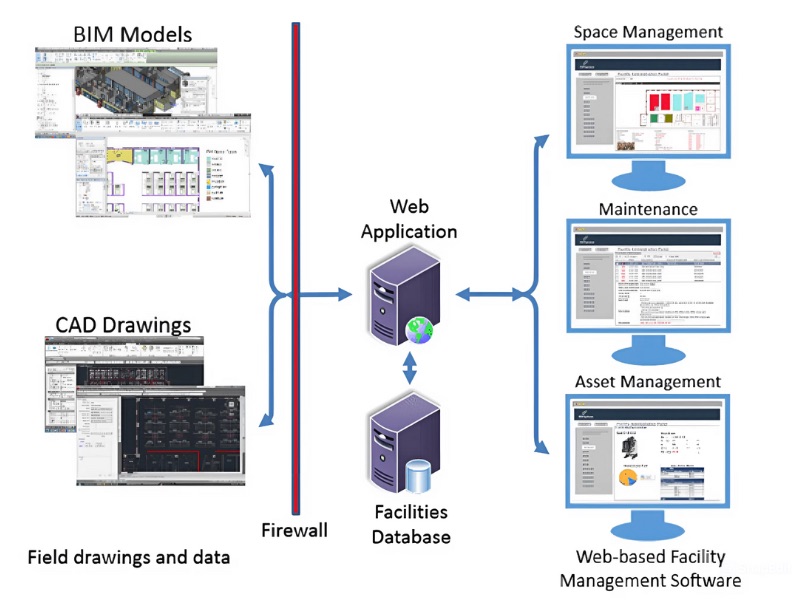
Source: BIM-FM Consortium-BIM-Guide-v2_1.pdf
Streamlined Maintenance Programs for Proactive Management
By embedding detailed asset and product data directly into the model, BIM helps create effective preventative maintenance programs. Facility managers can easily access information about equipment, including maintenance schedules and replacement parts, which reduces the time, cost, and effort associated with upkeep and minimizes costly reactive repairs.
BIM integrates with real-time data from IoT sensors or Computerized Maintenance Management Systems (CMMS) to monitor asset performance (e.g., vibration levels, temperature). This enables predictive maintenance by identifying issues before failures occur. This shift from reactive to preventative maintenance helps to extend asset lifespan, reduce downtime, and minimize unexpected repair costs.
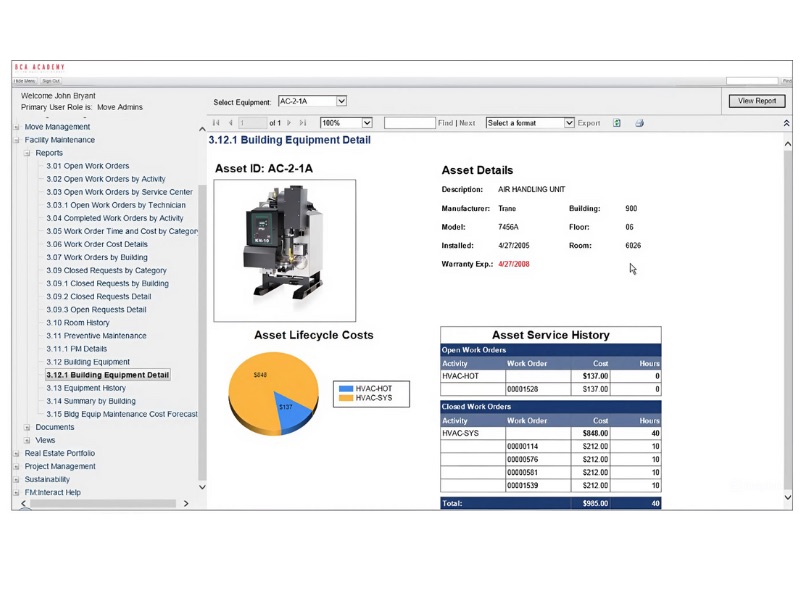
Source: BIM-FM Consortium-BIM-Guide-v2_1.pdf
Enhanced Energy Efficiency and Reduced Operating Costs
By integrating energy analysis tools with the BIM model, facility managers can simulate and evaluate the building’s energy performance under various conditions. This allows for the identification of energy-intensive areas and equipment, and the development of strategies to optimize energy consumption.
Furthermore, when planning upgrades or retrofits, BIM enables the evaluation of different design options and material choices for their impact on energy performance and sustainability goals, such as LEED certification. The ability to accurately model and analyze factors like daylighting, thermal performance, and HVAC system efficiency within BIM empowers facility managers to make informed decisions that reduce environmental impact and lower operational costs.
Renovations and economical retrofits
A BIM model that is updated throughout construction becomes a “living” as-built record. This provides facility managers with accurate, real-time data on the building’s existing conditions. When planning renovations or retrofits, this information dramatically reduces uncertainty, effort, and cost by providing a clear understanding of the project’s complexity and scope from the outset.
Optimized Lifecycle Management and Investment Decisions
Lifecycle data for building components is critical for predicting replacement timelines and estimating capital improvement costs. BIM models embed design details, life expectancy, and replacement costs, enabling facility managers and owners to evaluate the benefits of investing in durable materials and systems that may have higher upfront costs but deliver long-term savings and better lifecycle returns. By providing contractors and owners with clear insights into material longevity and replacement expenses, BIM supports informed decision-making, helping to avoid unnecessary overhead costs and optimize investments throughout the building’s lifecycle.

These operational advantages are just one piece of the puzzle. For a complete picture, explore our guide on the benefits of building information modeling to understand how it transforms every stage of the project lifecycle.
How to Use BIM for Facility Management: Practical Applications and Workflow
Understanding how to use bim for facility management effectively involves grasping the evolution of the model and its integration with existing systems. This section outlines the practical applications and workflow for leveraging BIM data throughout the asset lifecycle:
Understanding BIM Models Across the Asset Lifecycle
A BIM model evolves through the project, with different levels of detail serving different purposes.
- BIM Design Models: Created by architects and engineers, these models define the conceptual design, spatial relationships, and are used to produce construction documents.
- BIM Construction Models: Contractors enhance the design model with greater detail for purposes like clash detection, construction sequencing (4D), cost estimating (5D), and procurement.
- BIM As-Built Models: This is the crucial handover document. It is updated by contractors and suppliers to reflect all field changes and change orders, serving as the definitive record of the building as constructed.
- The Specialized BIM FM Model: Derived from the as-built model, the BIM FM model is streamlined for operational use. It removes construction-specific data, defines spaces with unique identifiers, and links assets to the organization’s facility management system for ongoing management.
Implementing a CDE for BIM in Facilities Management
A Common Data Environment (CDE) is an agreed-upon source of information for a project or asset. It is used to collect, manage, and share every piece of information through a structured process. A CDE, often implemented through a BIM server, is essential for ensuring all stakeholders are working from the most current data, which is critical for effective collaboration throughout the asset lifecycle.
Integrating BIM with Existing Facility Management Systems
While a BIM model is the authoritative source for a building’s physical attributes, dedicated FM systems are best for managing ongoing operations. The key is integration:
- Computer-Aided Facility Management (CAFM) Systems: These systems integrate with BIM to help track space, assets, and maintenance activities.
- Computerized Maintenance Management Systems (CMMS): These are focused specifically on managing scheduled and remedial maintenance tasks.
- Integrated Workplace Management Systems (IWMS): These are enterprise-level platforms that manage a broad portfolio, including real estate, space, maintenance, and strategic planning.
Organizing Facilities Data: Space as the Basic Organizer
To be useful for FM, data must be structured logically. Spaces (rooms) are the primary organizational unit. It is vital to establish a consistent room numbering system that matches building signage and uses unique identifiers. For financial purposes like rent calculations, area calculations should follow established standards, such as those from the Building Owners and Managers Association (BOMA) in the US.
Organizing Facilities Data: Assets as the Second Cornerstone
Assets—the equipment within the spaces—are the second cornerstone of FM data.
- Classification of Equipment: Assets must be classified logically to manage maintenance requirements.
- Leveraging Equipment Nameplates and Submittals: The data on equipment nameplates (manufacturer, model, serial number) and in contractor submittals (cut sheets, replacement parts, maintenance guides) is invaluable for populating the BIM FM model.
- Type vs. Instance Properties: To manage data efficiently, it’s important to distinguish between type properties (data true for all instances of an item, like a model number) and instance properties (data unique to a single item, like its asset ID or the zone it serves).
Challenges in Using BIM for Facility Management
Despite its significant benefits, implementing BIM for facility management involves several obstacles that organizations must address to achieve successful integration and maximize return on investment. Here are 12 common challenges:
- Difficulties in ensuring data accuracy and consistency when transferring information from the construction phase to operational use.
- Opposition within the organization to altering established facility management procedures.
- Scarcity of professionals who possess knowledge in both BIM methodologies and facility management practices.
- Complexities involved in integrating BIM software with existing facility management systems.
- Issues related to handling large BIM model file sizes to allow easy access for maintenance staff.
- The ongoing task of maintaining the BIM model’s accuracy after any modifications to the building or changes in its equipment.
- The challenge of defining the appropriate Level of Detail (LOD) necessary for operational needs without making the model overly complex.
- Uncertainty regarding who is responsible for and owns the processes of model maintenance and updates.
- The need to demonstrate the financial benefits of BIM implementation costs in relation to long-term operational cost reductions.
- Difficulties in achieving standardization across multiple buildings that have varying qualities of existing documentation.
- Security risks associated with incorporating building systems data into the BIM environment.
- The costs associated with software licenses for numerous users across the organization.
Standards and Best Practices for Effective BIM in Facilities Management
Open Standards: Industry Foundation Classes (IFCs) and OpenBIM
To overcome interoperability challenges, open standards are essential. Industry Foundation Classes (IFC) is a vendor-neutral, international standard (ISO 16739) that allows different BIM software applications to exchange data seamlessly.
The COBie Standard for Information Transfer
Construction Operations Building information exchange (COBie) is a data format for publishing a subset of BIM data focused on delivering asset information. It is particularly useful for transferring data to FM systems that may not have direct BIM integration capabilities.
Classification Systems: OmniClass for Model Data
A standardized classification system is needed to organize model data consistently. OmniClass, particularly tables for Elements and Products, provides an authoritative framework for structuring BIM information for FM.
Benefits of Cloud-Based BIM and FM Systems
Cloud-based systems are transforming collaboration. They offer enhanced security, reduce internal IT costs, and provide distributed, secure access to information for all stakeholders, regardless of their location.
Using BIM in facilities management addresses chronic industry challenges, such as the lack of up-to-date information at handover and poor integration between systems. It creates a transparent, data-rich environment that enhances all FM functions, from space planning to lifecycle asset management. A strategic adoption of BIM is not merely a technological upgrade but a fundamental improvement to how built assets are managed.
Unlock these facility management benefits with a powerful digital foundation. Our expert Revit modeling services deliver the accurate, data-rich as-built models essential for streamlining operations and optimizing your asset’s lifecycle.






